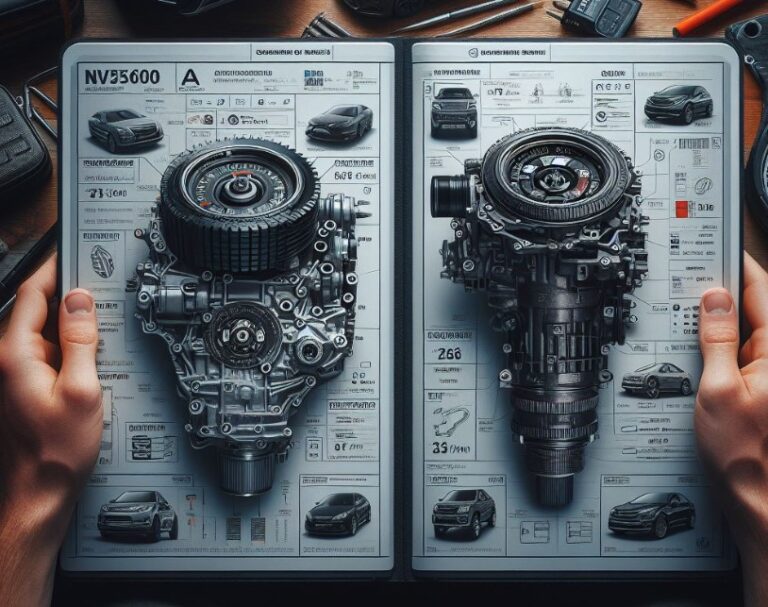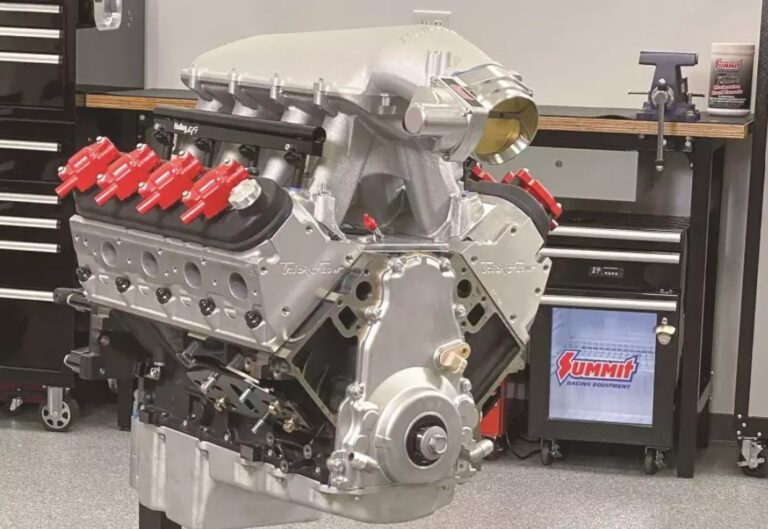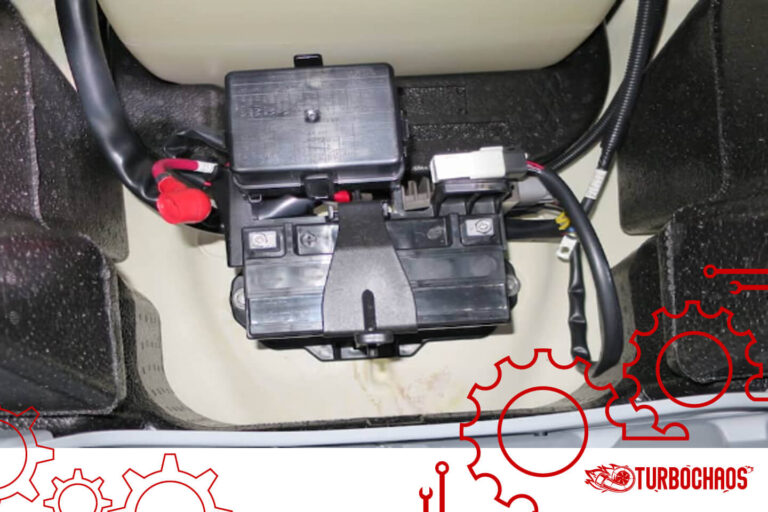Can No Gas Cap Cause Check Engine Light? Answered
Are you looking for a Can No Gas Cap Cause Check Engine Light? The question of whether a missing or faulty gas cap can trigger the check engine light is a common concern for many vehicle owners. A missing or improperly sealed gas cap can indeed cause the check engine light to illuminate. This happens due to the disruption of the vehicle’s evaporative emission system (EVAP), which controls fuel vapors.
Key Takeaways
- A missing or faulty gas cap can trigger the check engine light.
- The EVAP system is sensitive to changes in pressure, including those caused by a missing gas cap.
- Regularly checking the gas cap can prevent unnecessary check engine light alerts.
- Professional diagnosis is recommended if the check engine light persists after replacing the gas cap.
Can No Gas Cap Cause Check Engine Light?
Yes, a missing or faulty gas cap can cause the check engine light to illuminate. This occurs because the gas cap plays a crucial role in maintaining the proper pressure in the vehicle’s fuel system and preventing fuel vapors from escaping, which is essential for the efficient operation of the evaporative emission control (EVAP) system. If the gas cap is not sealing correctly, it can be detected as a leak in the EVAP system, triggering the check engine light.

The Role of the Gas Cap in Vehicle Emissions Control
The gas cap plays a crucial role in the vehicle’s evaporative emission control (EVAP) system. This system is designed to prevent gasoline vapors from escaping into the atmosphere.
A well-sealed gas cap maintains the necessary pressure in the fuel tank. When the gas cap is missing or not properly sealed, it disrupts this balance, potentially leading to increased emissions and triggering the check engine light.

Understanding the EVAP System
The EVAP system in modern vehicles is a complex network of hoses, valves, and sensors. It captures fuel vapors from the fuel tank and stores them in the charcoal canister.
When the engine runs, these vapors are purged and burned in the combustion process. If the system detects a leak, such as one caused by a missing gas cap, it triggers the check engine light.
Symptoms of a Faulty Gas Cap
A faulty gas cap can manifest several symptoms, indicating issues within the vehicle’s fuel system or the evaporative emission control system (EVAP). Recognizing these symptoms is crucial for timely diagnosis and repair. Here are the key symptoms to look out for:
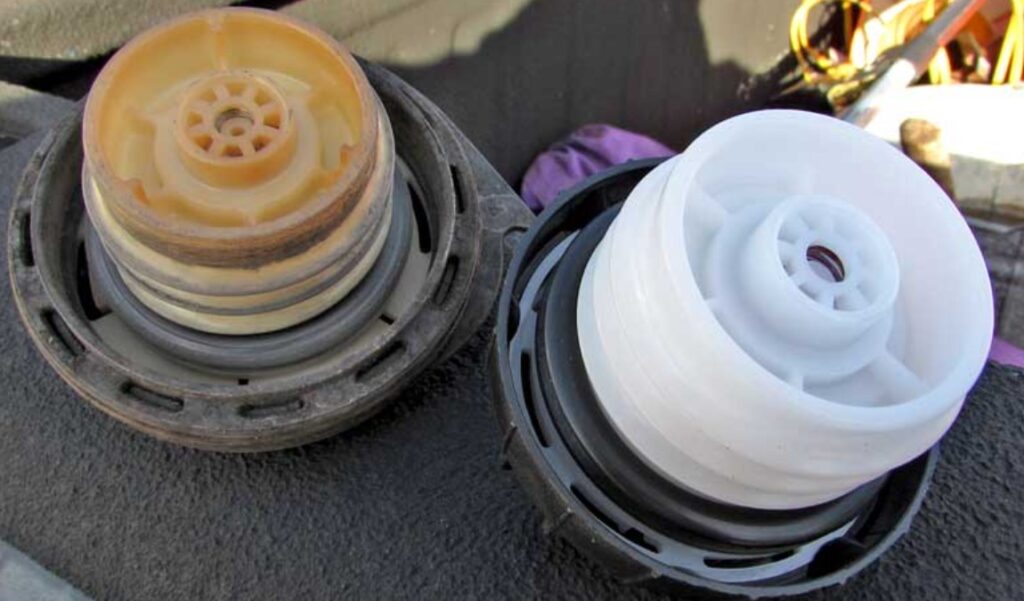
- Check Engine Light: One of the most common and immediate signs of a faulty gas cap is the illumination of the check engine light. The vehicle’s onboard diagnostics system (OBD-II) detects changes in pressure within the fuel system, often caused by a gas cap that isn’t sealing properly.
- Fuel Odor: A noticeable smell of gasoline around your vehicle can be a sign of a faulty gas cap. If the cap doesn’t seal correctly, fuel vapors can escape from the tank, leading to a noticeable odor.
- Loose or Damaged Cap: Physical signs such as a cap that doesn’t tighten properly, cracks, a broken seal, or damage to the threading can indicate a faulty gas cap. These physical damages can prevent the cap from forming an airtight seal.
- Frequent Trips to the Gas Station: If you find yourself needing to refuel more often than usual, it could be due to a faulty gas cap. A compromised cap can allow fuel to evaporate from the tank, reducing your fuel efficiency.
- Failed Emissions Test: A faulty gas cap can lead to a failed emissions test. The EVAP system is designed to prevent fuel vapors from escaping into the atmosphere, and a malfunctioning gas cap can disrupt this system, leading to increased emissions.
- Difficulty Starting the Engine: In some cases, a faulty gas cap can cause pressure imbalances in the fuel system, which might lead to issues with starting the engine. However, this symptom is less common and can be indicative of other fuel system issues as well.
- Visible Warning Message: Some modern vehicles have specific warning messages or icons on the dashboard indicating a problem with the fuel cap. This feature aids in quick diagnosis.
It’s important to address these symptoms promptly. While a faulty gas cap might seem like a minor issue, it can lead to more significant problems in the vehicle’s fuel and emission systems over time. Regular checks and timely replacement or repair of the gas cap can prevent these issues.
Preventive Measures
Regular inspection of the gas cap can prevent these issues. Ensure the cap is properly tightened after each refueling and periodically check for cracks or wear.
Diagnostic Steps for a Check Engine Light
When the check engine light illuminates on your dashboard, it’s a signal that your vehicle’s onboard diagnostics system (OBD-II) has detected a problem. Properly diagnosing the cause of this alert is crucial for maintaining the health and performance of your vehicle. Here are the key diagnostic steps to follow:
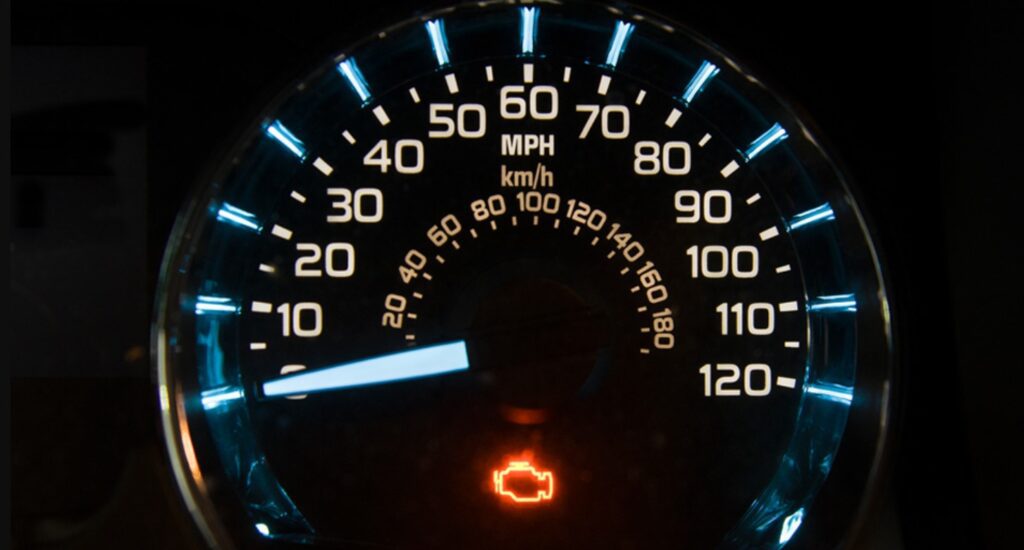
- Read the Diagnostic Trouble Codes (DTCs): The first step is to use an OBD-II scanner to read the diagnostic trouble codes stored in the vehicle’s computer system. These codes provide information about the nature of the problem. Each code consists of a letter followed by four numbers (e.g., P0301), and each signifies a specific issue.
- Interpret the Codes: Once you have the codes, you need to interpret what they mean. There are many resources available, including manuals and online databases, that explain what each code indicates. Some codes might directly point to a known issue (like a misfiring engine or a problem with the EVAP system), while others may require further investigation.
- Visual Inspection: Conduct a thorough visual inspection of the vehicle. Check for any obvious signs of damage or wear to components like hoses, wiring, and sensors. For instance, if the check engine light is related to the EVAP system, inspect the gas cap and fuel lines for any signs of damage or leaks.
- Check for Technical Service Bulletins (TSBs): TSBs are advisories issued by vehicle manufacturers when there are frequent reports of specific issues. They provide guidance on known problems and their solutions. Checking for TSBs related to your vehicle’s make, model, and specific problem can be very helpful.
- Further Testing: Depending on the trouble codes and your initial inspections, further testing may be necessary. This could include checking the fuel pressure, testing the battery and alternator, or using advanced diagnostic tools to test specific sensors and systems.
- Consult a Professional: If the problem is not immediately apparent or if it requires specialized knowledge or equipment to diagnose, it’s advisable to consult a professional mechanic. They have the expertise and tools to accurately diagnose and fix the issue.
- Clear the Codes and Test Drive: After any repairs are made, clear the trouble codes using the OBD-II scanner. Then, take the vehicle for a test drive to ensure that the issue is resolved and that the check engine light does not reappear.
- Monitor Vehicle Performance: Finally, keep an eye on your vehicle’s performance following the repair. Some issues may not be immediately apparent and might require a period of driving to ensure they are fully resolved.
Remember, the check engine light can be triggered by a wide range of issues, from simple problems like a loose gas cap to more serious engine troubles. Timely diagnosis and repair are key to maintaining your vehicle’s health and avoiding more costly repairs down the line.
Professional Assistance
If replacing or tightening the gas cap doesn’t turn off the check engine light, seek professional help. Mechanics can perform a smoke test to identify any leaks in the EVAP system.
Impact of a Missing Gas Cap on Vehicle Performance
The impact of a missing gas cap on vehicle performance might not be immediately noticeable, but it can have several subtle and long-term effects. Here’s how a missing gas cap can affect your vehicle:
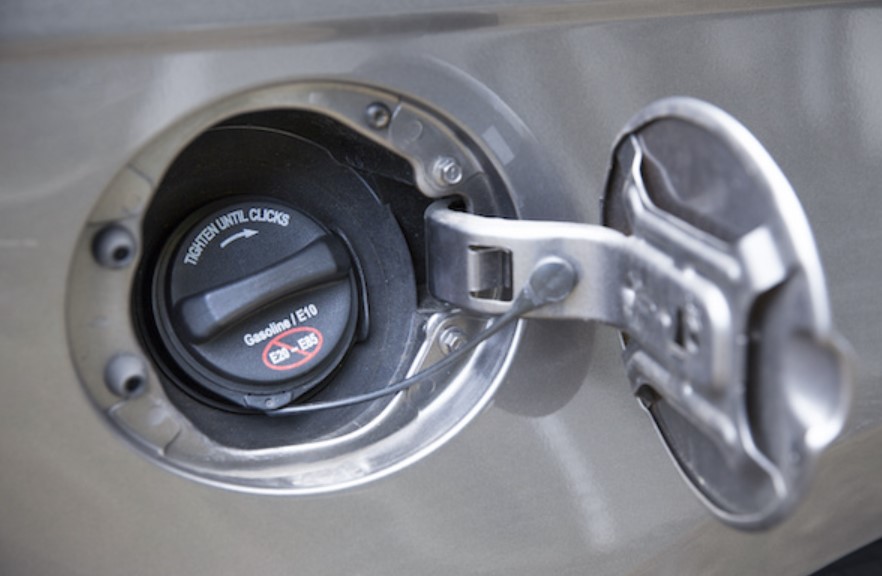
- Increased Emissions and Environmental Impact: The most direct impact of a missing gas cap is on the vehicle’s emissions. The gas cap seals the fuel system and prevents gasoline vapors from escaping. Without it, these vapors are released into the atmosphere, contributing to pollution and smog. This increase in hydrocarbon emissions is harmful to the environment and contributes to air quality degradation.
- Reduced Fuel Efficiency: A missing gas cap can lead to decreased fuel efficiency. The fuel system is designed to be a closed system, and when the gas cap is missing, fuel can evaporate. This means that some of the fuel you pay for is wasted, evaporating into the air rather than being used to power your vehicle.
- Potential for Contamination: The gas cap also acts as a barrier, protecting your fuel from outside contaminants like dust, dirt, and water. Without a gas cap, there’s an increased risk of these contaminants entering the fuel system. Over time, this can lead to clogged fuel filters, fuel pump failure, or even issues with the fuel injectors, all of which can degrade vehicle performance and require costly repairs.
- Triggering Check Engine Light: As previously mentioned, a missing gas cap can trigger the vehicle’s check engine light due to changes in the pressure of the fuel system. While this doesn’t directly affect performance, it’s an indication that the vehicle is not operating as it should be, and it can mask other, more serious issues that might arise.
- Potential Safety Risks: In rare cases, the absence of a gas cap can pose a safety risk. Fuel vapors are flammable, and without a cap to contain them, there’s a slight increase in the risk of fire, especially in the event of an accident or if the vapors come into contact with an external ignition source.
- Failing Emissions Tests: If you live in a region where emissions testing is required, a missing gas cap will likely cause your vehicle to fail these tests. This can lead to fines, the need for retesting, and the inability to legally drive the vehicle until the issue is resolved.
Long-Term Consequences
Ignoring a missing gas cap can lead to more significant issues over time, including damage to the EVAP system and other engine components.
Legal and Environmental Considerations
Driving without a gas cap is not just a mechanical issue; it has legal and environmental implications. Many regions have strict emissions laws, and a faulty EVAP system can lead to fines and failed inspections.
The Importance of Compliance
Staying compliant with emissions standards is crucial for environmental protection and avoiding legal penalties.
Advanced Troubleshooting for EVAP System Issues
When the check engine light persists even after addressing the gas cap issue, it’s time to delve deeper into the EVAP system. Advanced troubleshooting is necessary to pinpoint the exact cause. This often involves checking for leaks or malfunctions in various components of the EVAP system.
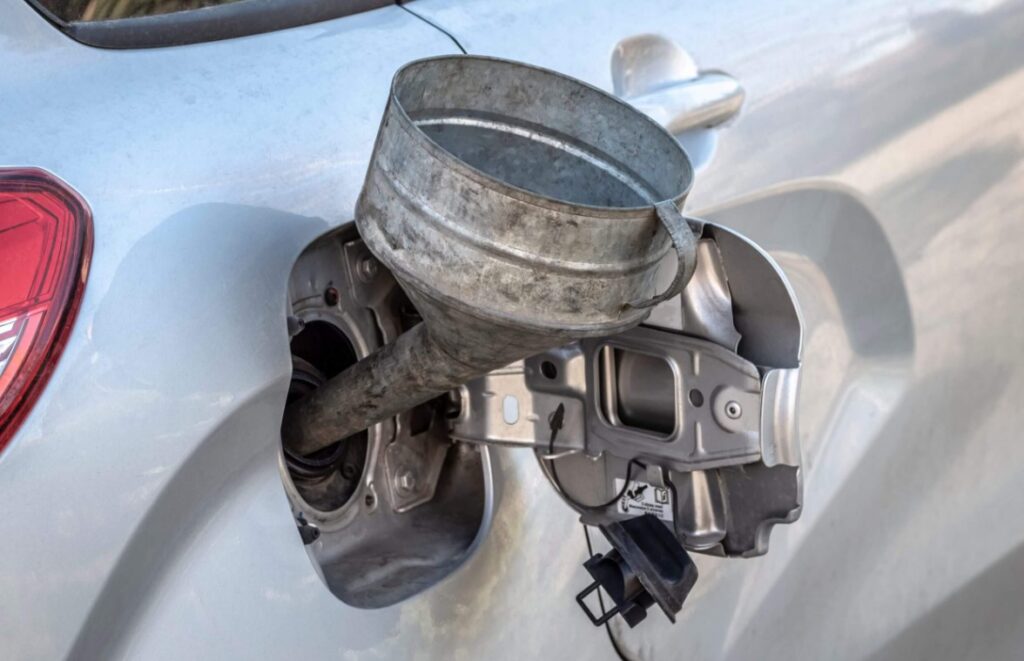
Identifying Common EVAP System Faults
The EVAP system consists of several key components, including the purge valve, vent valve, and charcoal canister. Faults in any of these parts can cause similar symptoms to a missing gas cap.
For instance, a stuck purge valve might not effectively manage fuel vapors, leading to an illuminated check engine light. Regular maintenance and checks can prevent these issues from escalating.
The Role of Professional Diagnostics
Professional diagnostics go beyond basic code reading. Mechanics use advanced tools to perform a smoke test, where smoke is introduced into the EVAP system to visually detect leaks. This method is highly effective in identifying even the smallest faults that might not be immediately apparent.
The Evolution of Fuel Cap Technology
Fuel cap technology has evolved significantly over the years, with newer vehicles often equipped with capless fuel systems. These systems eliminate the need for a traditional gas cap, reducing the chances of human error leading to EVAP system issues.
Benefits of Capless Fuel Systems
Capless fuel systems offer several advantages. They provide a better seal, reducing the likelihood of EVAP system leaks. Additionally, they are more convenient for drivers, eliminating the worry of leaving the gas cap behind after refueling.
Adapting to New Technologies
As automotive technology advances, understanding and adapting to these changes is crucial for vehicle maintenance. Owners of vehicles with capless systems should be aware of the unique maintenance and troubleshooting procedures for these systems.
The Environmental Impact of EVAP System Malfunctions
EVAP system malfunctions, including issues caused by a missing gas cap, have a broader environmental impact. Fuel vapors released into the atmosphere contribute to air pollution and smog.

Reducing Environmental Footprint
By maintaining the EVAP system and ensuring the gas cap is secure, vehicle owners can play a part in reducing their environmental footprint. This not only helps in adhering to environmental regulations but also contributes to cleaner air quality.
The Role of Vehicle Owners in Environmental Protection
Vehicle owners have a responsibility to maintain their vehicles in an environmentally friendly manner. Regular maintenance and addressing EVAP system issues promptly are crucial steps in fulfilling this responsibility.
Future Trends in Vehicle Emission Control
The automotive industry is continuously evolving, with a strong focus on reducing vehicle emissions. Future trends are likely to include more advanced EVAP systems and increased use of electric vehicles (EVs).
Innovations in Emission Control
Innovations in emission control technologies are expected to become more sophisticated. This includes improvements in EVAP systems and the development of more efficient engines and fuel systems.
The Shift to Electric Vehicles
The shift towards electric vehicles is a significant trend in reducing vehicle emissions. EVs eliminate the need for a traditional fuel system, including the EVAP system, thereby reducing potential emission issues.
What Issues Can A Defective Gas Cap Cause?
A defective gas cap can lead to several issues in a vehicle, primarily affecting the evaporative emission control (EVAP) system. The most common problems include:

- Triggering the Check Engine Light: As mentioned earlier, a faulty gas cap can cause the check engine light to illuminate. This is because the EVAP system detects an issue with the fuel vapor containment, often reading it as a leak.
- Increased Emissions: A defective gas cap fails to seal the fuel system properly, allowing fuel vapors to escape. This increases the vehicle’s emissions, contributing to environmental pollution and potentially causing the vehicle to fail emissions testing.
- Reduced Fuel Efficiency: Escaping fuel vapors means that not all the fuel goes towards powering the vehicle, which can slightly reduce fuel efficiency over time.
- Fuel Odor: A loose or damaged gas cap can lead to a noticeable smell of fuel around the vehicle, as vapors escape directly from the fuel tank.
- Potential Damage to the EVAP System: Over time, a faulty gas cap can lead to more significant issues within the EVAP system, as it is forced to work harder to control emissions, potentially leading to costly repairs.
Will My Check Engine Light Come On If I Don’t Have A Gas Cap?
Yes, not having a gas cap will likely cause the check engine light to come on. The absence of a gas cap disrupts the functioning of the vehicle’s evaporative emission control system (EVAP). The EVAP system is designed to capture and contain fuel vapors from the fuel tank and prevent them from being released into the atmosphere.
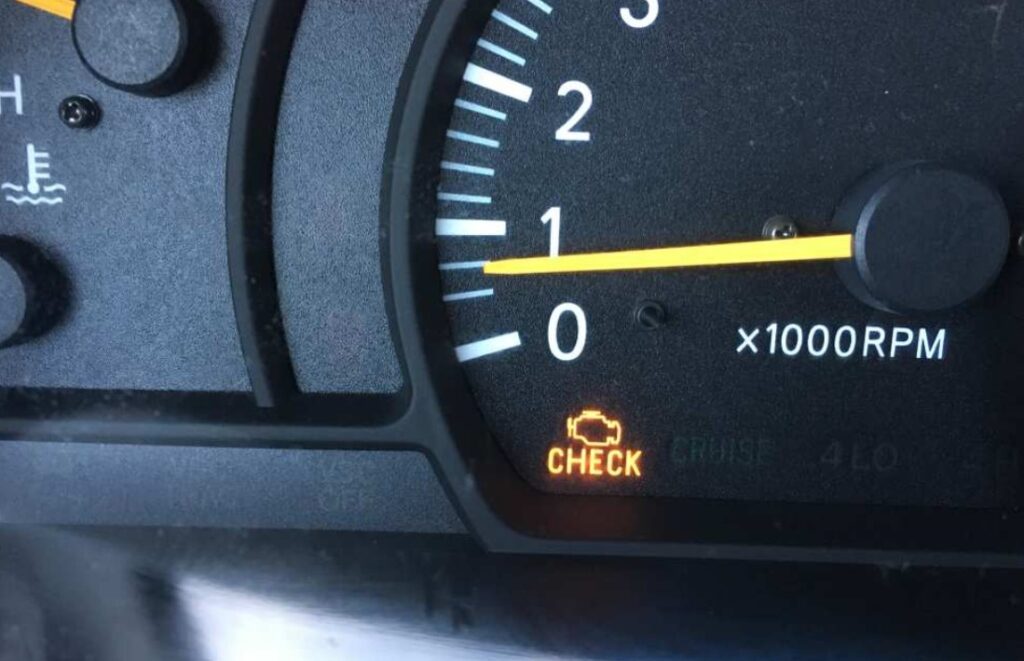
Without a gas cap, the system detects a significant leak, as it cannot maintain pressure or contain the vapors. This detection is communicated to the vehicle’s onboard diagnostics system, which in turn illuminates the check engine light as a warning of the issue.
Can A Loose Gas Cap Trigger Check Engine Light?
Yes, a loose gas cap can indeed trigger the check engine light in most modern vehicles. The reason for this is closely tied to the vehicle’s evaporative emission control system (EVAP).
The EVAP system is designed to prevent gasoline vapors from escaping into the atmosphere, and it relies on a sealed fuel system to function correctly. A gas cap that is not properly tightened disrupts this seal. When the seal is compromised, the EVAP system detects a leak, often interpreted as a fault or malfunction.
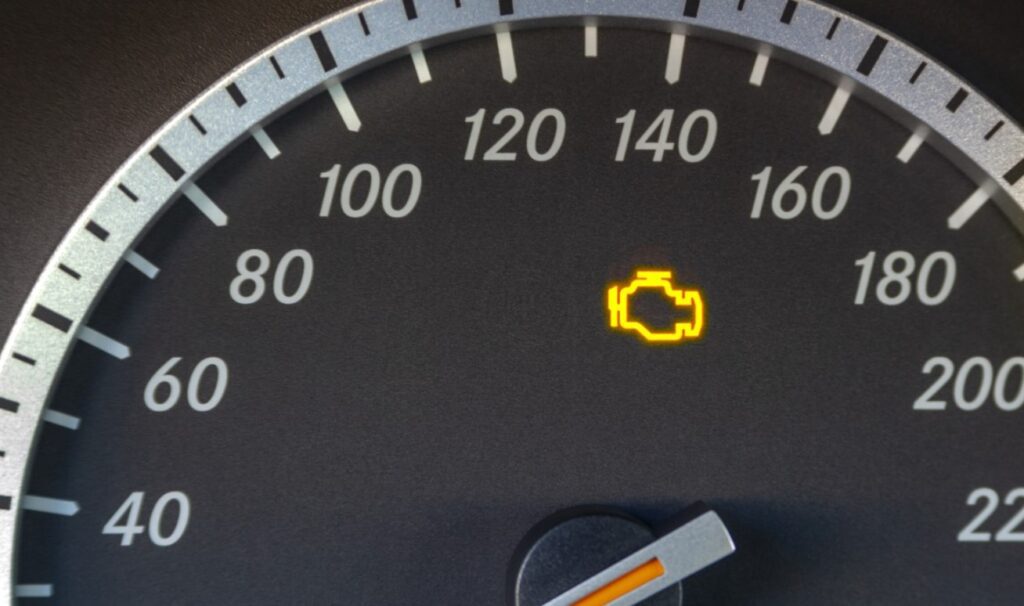
This triggers the vehicle’s onboard diagnostic system (OBD-II) to illuminate the check engine light as a warning. This mechanism is an essential part of the vehicle’s efforts to comply with emissions standards and maintain fuel efficiency.
What Happens If I Drive My Car Without A Gas Cap?
Driving a car without a gas cap can lead to several issues, primarily related to the vehicle’s emissions control and fuel efficiency:
- Evaporative Emissions: One of the most immediate effects of driving without a gas cap is the increase in evaporative emissions. Fuel vapors escape directly from the tank, contributing to air pollution and smog.
- Triggering the Check Engine Light: As previously mentioned, a missing gas cap will likely trigger the check engine light due to a breach in the EVAP system.
- Reduced Fuel Efficiency: Without a gas cap to seal the fuel system, some of the fuel can evaporate, leading to reduced fuel efficiency. While the impact might be minimal in the short term, it can add up over time.
- Contamination of the Fuel System: The gas cap also serves as a barrier against dust, debris, and water entering the fuel system. Without it, there’s an increased risk of contaminants getting into the fuel tank, which can lead to engine problems.
- Safety Risks: In rare cases, the absence of a gas cap can pose a safety risk due to the increased likelihood of fuel vapors coming into contact with external ignition sources.
- Failing Emissions Tests: If you live in an area where emissions testing is required, driving without a gas cap will almost certainly result in a failed emissions test.
It’s important to address a missing or damaged gas cap promptly to avoid these issues and maintain the vehicle’s performance and compliance with environmental regulations.
Conclusion
In conclusion, a missing or faulty gas cap can indeed cause the check engine light to illuminate, affecting vehicle performance and compliance with emissions standards.
Regular checks and timely intervention are key to maintaining the integrity of the EVAP system. Remember, if the check engine light persists, professional diagnosis is essential to ensure your vehicle runs efficiently and remains environmentally friendly.
Top FAQ’s
What does the check engine light mean when it comes to the gas cap?
The check engine light may illuminate if the gas cap is loose, damaged, or missing. This is because the gas cap ensures the integrity of the vehicle’s evaporative emission control (EVAP) system by maintaining the right pressure and preventing fuel vapors from escaping. If the cap isn’t sealing correctly, it can trigger the light as a warning of a potential EVAP system leak.
How long after fixing a gas cap will the check engine light go off?
After correcting a gas cap issue, the check engine light might not go off immediately. It can take several driving cycles (a cycle is a period of vehicle operation from a cold start to reaching normal operating temperature) for the car’s computer to run the necessary checks and determine that the issue is resolved. This process can take a few days.
Can a faulty gas cap cause performance issues?
While a faulty gas cap primarily affects the EVAP system and emissions, it can indirectly impact vehicle performance. A compromised EVAP system might lead to a slight decrease in fuel efficiency and, in rare cases, can affect the overall driving performance if it leads to more significant EVAP system issues.
Are capless fuel systems better than traditional gas caps?
Capless fuel systems offer several advantages over traditional gas caps. They provide a more reliable seal, reducing the risk of EVAP system leaks and the associated check engine light issues. They also eliminate the possibility of forgetting to replace the cap after refueling. However, they may have their own set of maintenance requirements and potential issues.
How do I know if my gas cap is the cause of the check engine light?
If your gas cap is loose, missing, or visibly damaged, and the check engine light comes on, the cap could be the cause. Tightening or replacing the cap might solve the issue. If the light remains on after a few days of driving, further diagnostics may be needed.

Welcome to the exhilarating world of Matt Rex, a professional car racer turned renowned vehicle enthusiast. Immerse yourself in his captivating blog as he shares heart-pounding adventures, expert reviews, and valuable insights on cars, trucks, jets, and more. Fuel your passion for speed and discover the beauty of vehicles through Matt’s engaging stories and meticulous expertise. Join the ever-growing community of enthusiasts who find inspiration and expert advice in Matt Rex’s blog—a digital hub where the thrill of speed meets the pursuit of knowledge.


![Can Humidity Cause Check Engine Light To Come On? [Answered]](https://www.turbochaos.com/wp-content/uploads/2023/11/Can-Humidity-Cause-Check-Engine-Light-To-Come-On-768x427.jpg)
